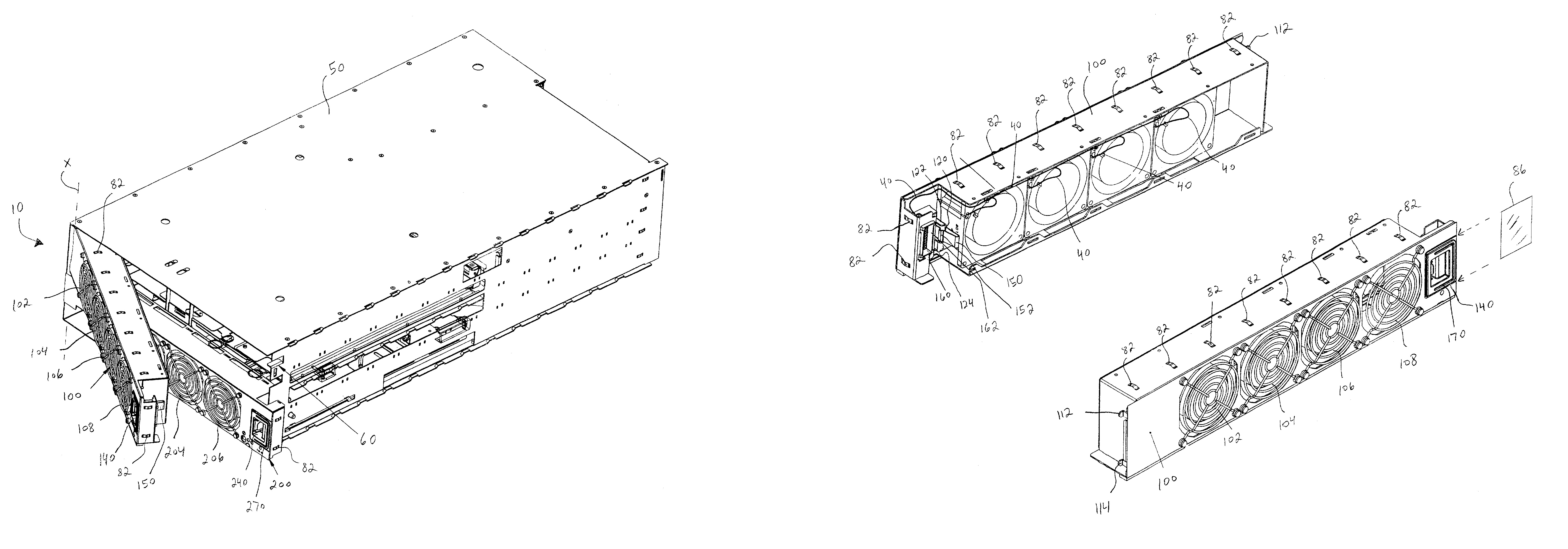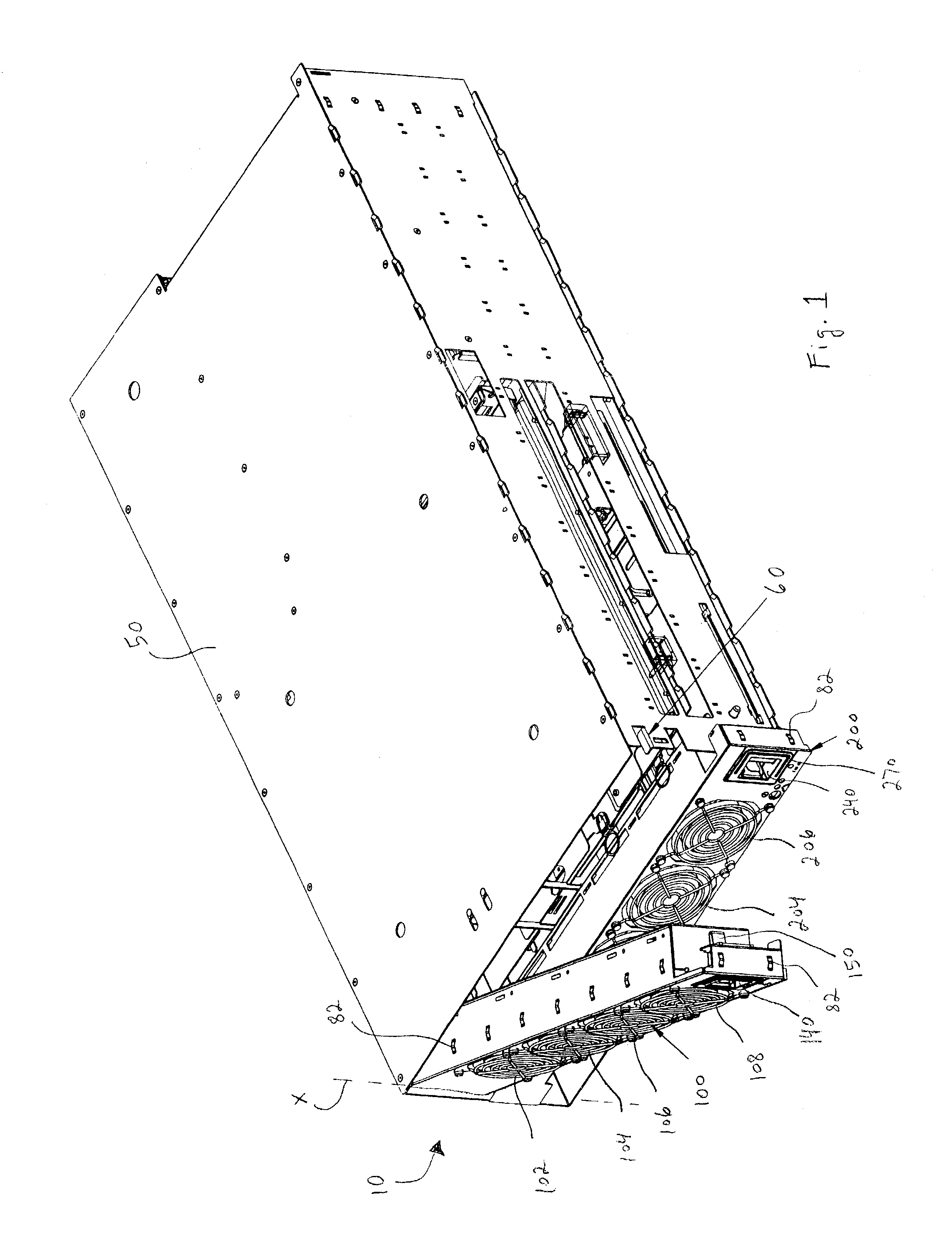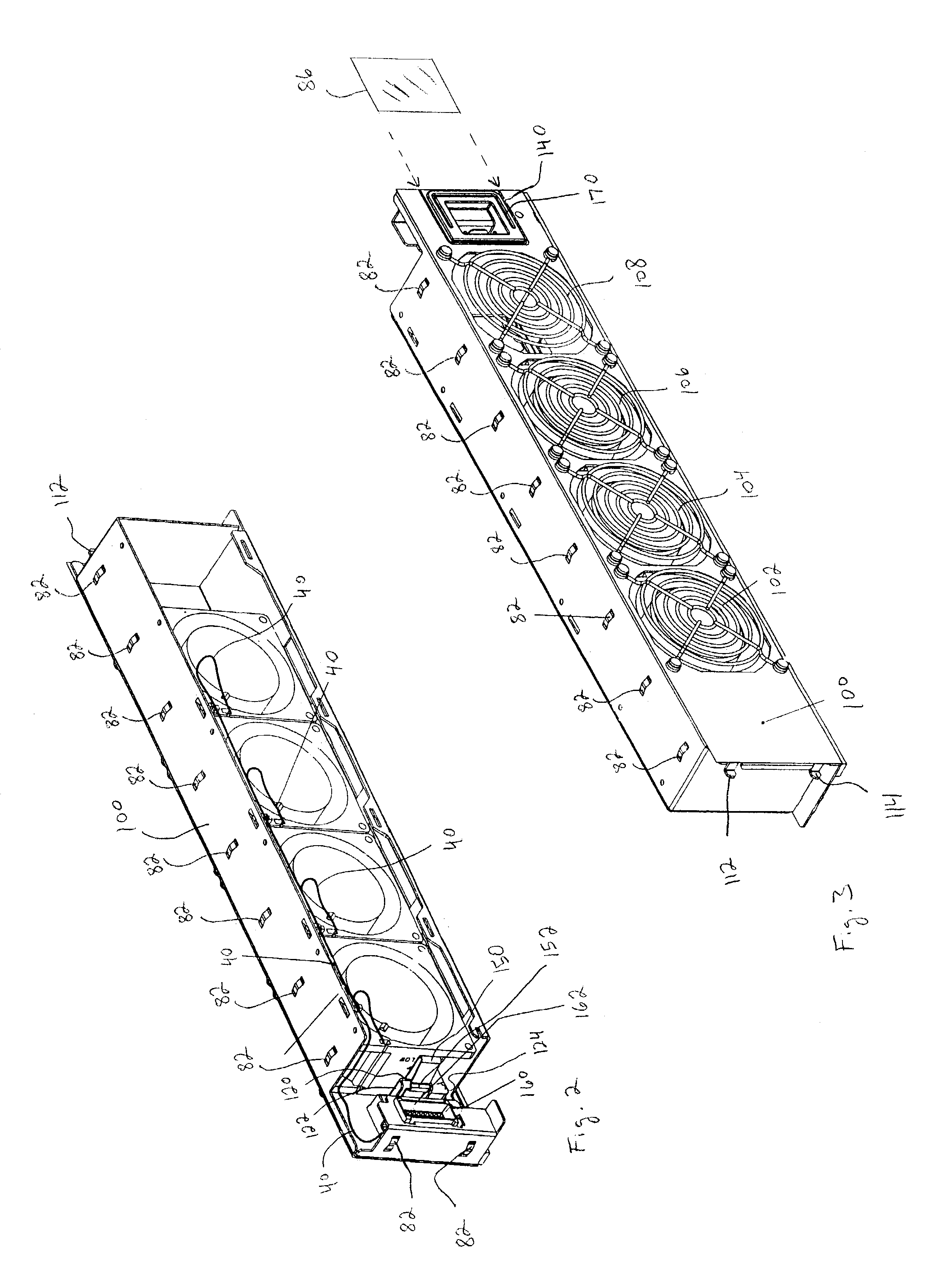Fan tray assembly
- Summary
- Abstract
- Description
- Claims
- Application Information
AI Technical Summary
Benefits of technology
Problems solved by technology
Method used
Image
Examples
Embodiment Construction
[0029]Referring now to the drawing, in which like reference numbers refer to like elements throughout the various figures that comprise the drawing, FIG. 1 shows a fan tray assembly 10 according to an exemplary embodiment of the invention. The fan tray assembly 10 comprises two separate fan trays: an upper fan tray 100 including four fans 102, 104, 106, 108 is located over a lower fan tray 200 including three fans 202, 204, 206 and a portal 210 that accommodates the insertion of peripheral components (such as instruction cards, drives, and the like) which are not shown. In combination, the two fan trays 100, 200 occupy substantially all of the available front profile or face of the chassis or module 50 to which the fan trays 100, 200 connect. The seven total fans 102, 104, 106, 108, 202, 204, 206 of the fan tray assembly 10 direct air flow (see arrow “A” in FIG. 4) through the module 50.
[0030]Although seven total fans are illustrated in the figures, it should be apparent that any nu...
PUM
 Login to View More
Login to View More Abstract
Description
Claims
Application Information
 Login to View More
Login to View More - R&D
- Intellectual Property
- Life Sciences
- Materials
- Tech Scout
- Unparalleled Data Quality
- Higher Quality Content
- 60% Fewer Hallucinations
Browse by: Latest US Patents, China's latest patents, Technical Efficacy Thesaurus, Application Domain, Technology Topic, Popular Technical Reports.
© 2025 PatSnap. All rights reserved.Legal|Privacy policy|Modern Slavery Act Transparency Statement|Sitemap|About US| Contact US: help@patsnap.com



